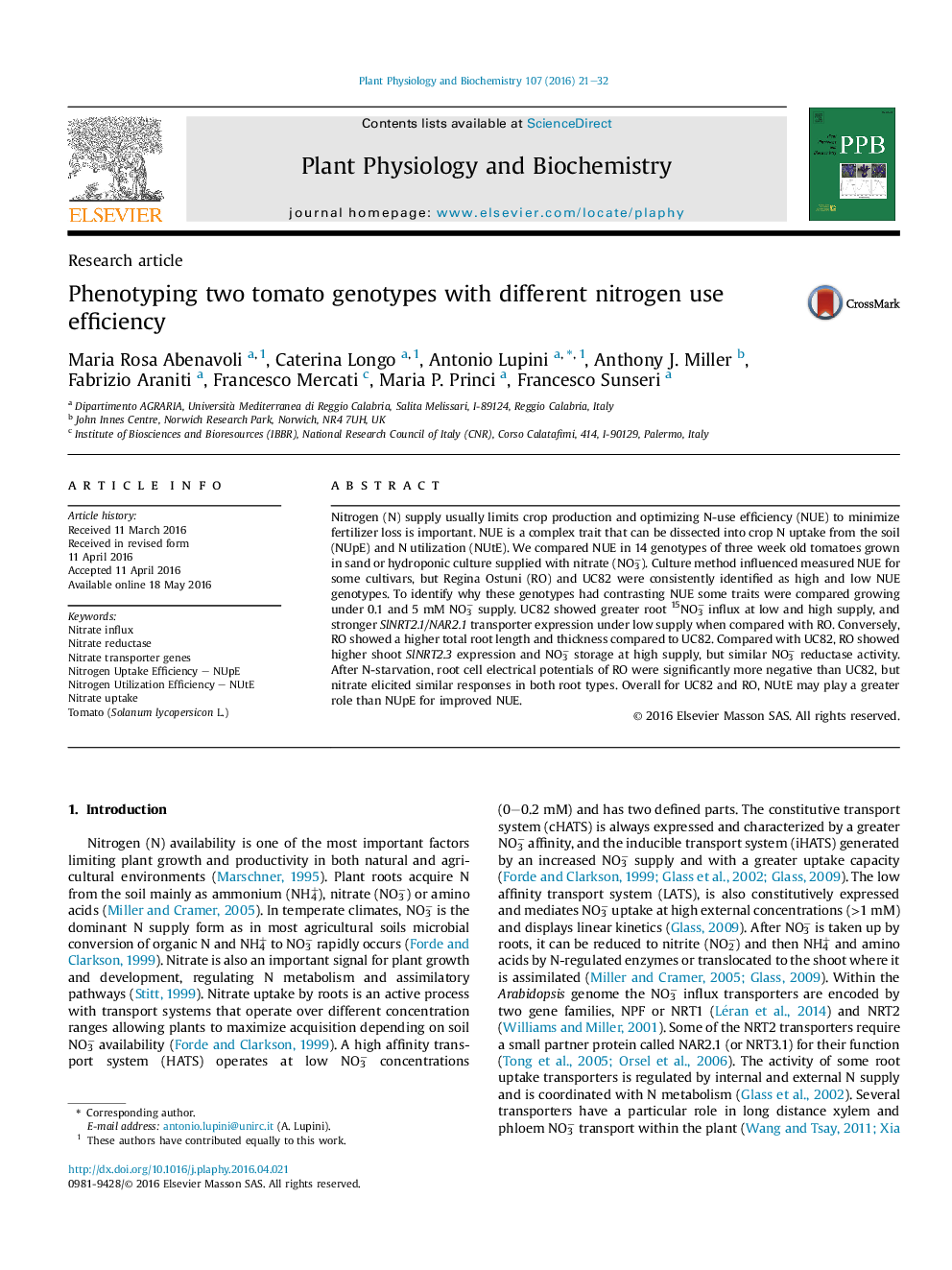| Article ID | Journal | Published Year | Pages | File Type |
|---|---|---|---|---|
| 2014648 | Plant Physiology and Biochemistry | 2016 | 12 Pages |
•Nitrogen use efficiency (NUE) for some tomato cultivars depended on the culture method.•Total root length and fineness may be important morphological traits for NUE, at low nitrate supply.•SlNTR2.3 expression may make a good marker for improving NUE in tomato genotypes.
Nitrogen (N) supply usually limits crop production and optimizing N-use efficiency (NUE) to minimize fertilizer loss is important. NUE is a complex trait that can be dissected into crop N uptake from the soil (NUpE) and N utilization (NUtE). We compared NUE in 14 genotypes of three week old tomatoes grown in sand or hydroponic culture supplied with nitrate (NO3−). Culture method influenced measured NUE for some cultivars, but Regina Ostuni (RO) and UC82 were consistently identified as high and low NUE genotypes. To identify why these genotypes had contrasting NUE some traits were compared growing under 0.1 and 5 mM NO3− supply. UC82 showed greater root 15NO3− influx at low and high supply, and stronger SlNRT2.1/NAR2.1 transporter expression under low supply when compared with RO. Conversely, RO showed a higher total root length and thickness compared to UC82. Compared with UC82, RO showed higher shoot SlNRT2.3 expression and NO3− storage at high supply, but similar NO3− reductase activity. After N-starvation, root cell electrical potentials of RO were significantly more negative than UC82, but nitrate elicited similar responses in both root types. Overall for UC82 and RO, NUtE may play a greater role than NUpE for improved NUE.
